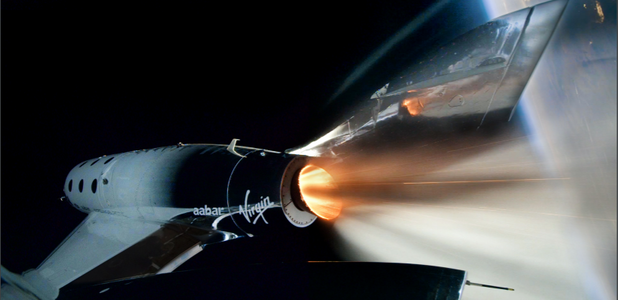Virgin Galactic: Ready for Launch or Lost in Space?
By: KS Anthony | Published: February 18, 2020 | Be the First to Comment

Virgin Galactic: Ready For Launch or Lost in Space?
Here’s what one SumZero researcher has to say.
Although SumZero is known as a value-driven investment community, we often see ideas that offer a more VC-like return profile, with hockey stick growth potential. This is the type of value we perceived in the following idea.
As Wall Street searches for the next breakout stock – the next Microsoft, Google, Amazon, or Apple – one name has kept investors in close orbit since its IPO last fall: Virgin Galactic (SPCE: US), which promises to take well-heeled customers to new heights – literally – in luxury travel by delivering them to space. Is this the time to get on board financially? Many are saying yes. Among them are Rishi Dixit, a Valiant Capital Management analyst and SumZero contributor who identifies “two near-term catalysts that will drive the stock significantly higher” in his recently-closed long thesis on Virgin Galactic, which reached a $2.3B valuation in its market debut: a number that has nearly doubled since then. Dixit’s price target was eclipsed within a week of his idea being posted to SumZero, as were those of Vertical Research, Credit Suisse, and Morgan Stanley, following news that the company had relocated its SpaceShipTwo – named the VSS Unity – from the Mojave Desert to Virgin’s commercial headquarters at New Mexico’s Spaceport America's Gateway to Space.
“Large institutional investors are finally investing (amidst) a low float,” Dixit writes, noting that the reason for latecomers to the first publicly-traded commercial space agency was likely due to Virgin Galactic’s unconventional IPO, which was facilitated by their combining with Social Capital Hedosophia Holdings, a SPAC founded by former Facebook executive Chamath Palihapitiya, which raised $700M along with $100M of Palihapitiya’s own money.
“There are many investors (that lacked) access to the SPAC for various reasons,” Dixit says, “be it retail investors not sure of what the process is, ETFs waiting for the increase in free float (ITA: $5Bn, PPA: $1Bn, DAR: $1.8Bn) or large mutual funds that are restricted from owning SPACs. Inflows have begun to come in, but we expect more to drive the price higher given the low-float.”
In addition to this injection of new investor capital, Dixit suggests that despite the moonshot, the company should be looking higher, saying that “2020 and 2021 guidance grossly underestimates the revenue generating potential of the first few commercial flights.” So far, the company has sold or collected deposits on over 600 90-minute space flights which will include training at Virgin’s Mojave Desert facility, a spacesuit, and other novel experiences in addition to the flight. The $250,000 flights (with a 50% deposit required to secure a seat) offer buyers the ability to view the Earth from Virgin’s SpaceShipTwo, a aerial carrier-launched vessel that will give the astronauts a taste of weightlessness, which will likely come as a relief after a “near-vertical” climb at Mach 3.5. Among those who’ve signed up include singer Justin Bieber and actor Leonardo DiCaprio, adding a touch of glamour to Virgin’s offering. Dixit sees substantial upside in this demographic, saying “we believe the company will drive the price of these significantly, and that there is a massive willingness of the uber-wealthy to pay.”
There are, however, some who are still bearish on the stock: according to Bloomberg, short-sellers make up 31% of SPCE’s float, and are down $214M since last November in mark-to-market losses.
Beyond the novelty of space tourism is the long-term potential for how the technology that gets us to the stars could transform travel on Earth through point-to-point, hypersonic transportation using similar craft to connect travelers between cities at five times the speed of sound. Boeing (BA: US) has already committed to a $20M investment in SPCE to help the company develop hypersonic commercial aircraft.
More may be revealed after Thursday, February 20th, when CEO George Whitesides presents at the Barclays Industrial Select Conference in Miami, Florida, five days before Virgin Galactic’s earnings call on February 25th after market close.
As of presstime, however, there is no firm date for an inaugural launch to take a paying customer into space, though Richard Branson expressed confidence that 2020 would see the same. “We have an announcement to make, so I’m not allowed to talk about it,” Branson told CNBC last October. “Sometime next year, I will be taking somebody up, but I will have to let you know.”
Regardless of when that happens, many agree that once Virgin Galactic’s ships soar skyward, their stock will follow. For value investors, the question of when those ships will launch is less important than the question of when to buy in. For those with long positions, the answer is now.






Comments
Please sign in or create an account on SumZero to post a comment.